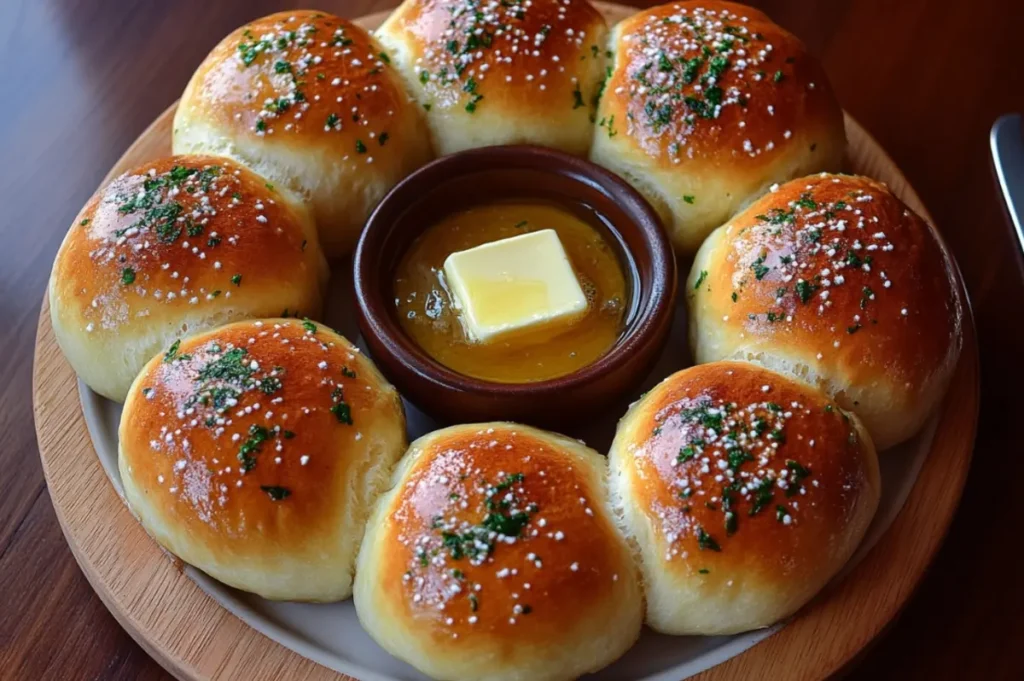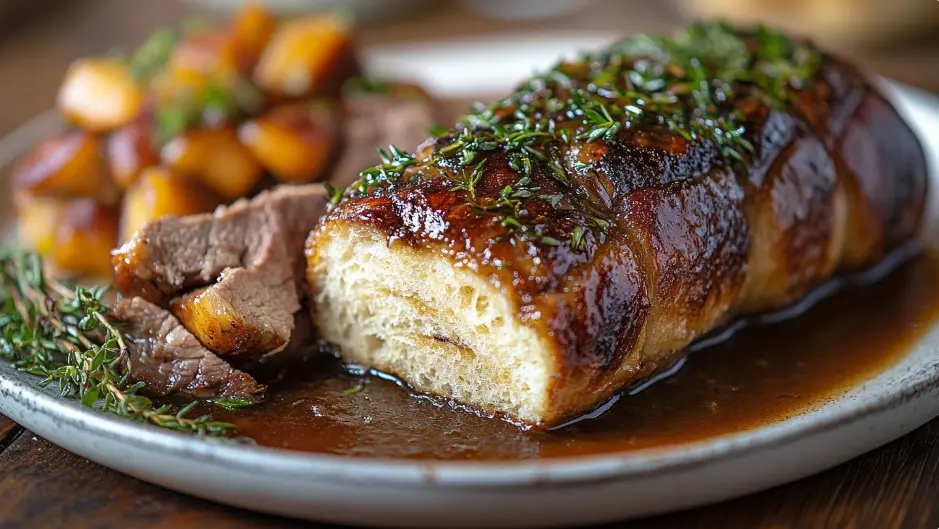When you’re setting the table, two common types of bread often appear: soft rolls and dinner rolls. Although they might seem similar, the difference between a soft roll and a dinner roll lies in their ingredients, texture, and how they complement your meal. Understanding these differences helps you choose the perfect roll for any occasion.
Both soft rolls and dinner rolls offer that delightful fluffiness and light texture we love. However, they vary in how they are made, their taste, and how they are best served. From the delicate crumb of a soft roll to the slightly firmer bite of a dinner roll, each has unique qualities that make it a staple for various meals.
In this article, we’ll break down the differences between soft rolls and dinner rolls, dive into their ingredients, baking techniques, and share the best situations for serving each. Along the way, you’ll discover options like yeast-free dinner rolls for a quicker, easier alternative when you’re in a rush.
What is the Difference Between a Soft Roll and a Dinner Roll?
Soft rolls and dinner rolls may appear similar, but their differences in texture and ingredients make each special. Let’s explore what sets them apart and how you can decide which one fits your meal best.

Soft Rolls vs. Dinner Rolls: What Sets Them Apart?
Soft rolls stand out for their pillowy texture. They offer a light, airy consistency, perfect for sandwiches or as a tender side to a meal. Ingredients like milk, butter, and eggs provide moisture and richness to the dough. This enriched dough creates a softer, almost melt-in-your-mouth texture.
In contrast, dinner rolls have a firmer texture. They work as a versatile side dish that pairs with a wide variety of meals, from soups and salads to hearty roasts. Dinner roll dough contains basic ingredients like flour, yeast, water, and a touch of sugar and fat, resulting in a balanced flavor.
For a quicker option that doesn’t require yeast, check out our quick and fluffy yeast-free dinner rolls recipe. This recipe simplifies the process while still delivering delicious results.
Key Differences Between Soft Rolls and Dinner Rolls
The difference between a soft roll and a dinner roll primarily comes down to ingredients and preparation methods. Both share basic elements, but soft rolls include additional ingredients that create a softer texture, while dinner rolls remain more versatile.
Ingredients: What Makes Soft Rolls Different from Dinner Rolls?
Soft rolls use enriched dough, which includes butter, milk, eggs, and sometimes sugar, along with flour, water, yeast, and salt. These ingredients add fat and moisture, resulting in a soft roll that feels light, tender, and slightly sweet.
In comparison, dinner rolls rely on a simpler dough. This basic recipe allows dinner rolls to complement a variety of dishes. Some dinner roll recipes might include butter or milk, but these ingredients play a smaller role, creating a lighter, less sweet flavor.
For those who want a quicker alternative, yeast-free dinner rolls offer an option. Bakers can use baking powder or baking soda as substitutes for yeast, speeding up the process. If you’re curious about baking without yeast, explore this guide on baking without yeast for more insights.
Preparation Techniques: Soft Rolls vs. Dinner Rolls
Soft rolls require careful handling of the dough to maintain their airy texture. Enriched dough with butter and milk makes it more delicate, so bakers avoid overworking it. Instead, they knead the dough just enough to develop gluten and allow proper rising. After shaping, soft rolls typically undergo a shorter second rise before baking until golden.
Dinner rolls need more kneading to develop the gluten structure that creates their chewiness. Bakers allow the dough to rise fully before shaping it into uniform balls or other forms. A second rise ensures dinner rolls stay light and fluffy inside while maintaining a firmer exterior.
In yeast-free recipes, the preparation process becomes simpler. Baking powder allows immediate baking without the need for rise times. For more information on how baking powder works in bread, visit this guide from King Arthur Baking.
Texture, Flavor, and Serving Suggestions for Soft Rolls vs. Dinner Rolls
The difference between a soft roll and a dinner roll becomes most obvious when you taste them. Their texture and flavor influence how and when to serve them best.

Texture: Soft Roll vs. Dinner Roll
Soft rolls stand out for their pillow-like softness. Enriched dough provides a tender crumb that almost melts in your mouth. Their light and airy texture makes soft rolls perfect for spreading with butter, jam, or honey.
On the other hand, dinner rolls offer a chewier texture. While still soft inside, they often feature a firmer exterior, making them a better choice for pairing with heartier dishes. The crumb of a dinner roll feels more substantial, perfect for mopping up sauces, gravies, or soups.
Flavor: Soft Rolls vs. Dinner Rolls
The flavor difference between soft rolls and dinner rolls plays a key role in their uses. Soft rolls taste slightly sweeter due to ingredients like butter, milk, and sugar. They’re ideal for breakfast dishes or as a sweet complement to savory meals. Their buttery flavor pairs beautifully with simple spreads like salted butter or honey.
In contrast, dinner rolls have a more neutral flavor, allowing them to complement a wide range of dishes. Their subtle taste pairs well with everything from roasted turkey to simple salads. This versatility makes dinner rolls a reliable choice for any meal, whether it’s a casual dinner or a formal gathering.
If you’re feeling adventurous, try using dinner rolls as the base for some creative sourdough bread sandwich ideas. These ideas elevate your sandwiches to a whole new level.
Serving Suggestions: When to Serve Soft Rolls vs. Dinner Rolls
Soft rolls shine when you need a light, airy bread option. They’re ideal for breakfast or brunch, where their sweetness and softness pair well with scrambled eggs,or fruit spreads. Soft rolls also make excellent sandwich buns for lighter fillings like turkey or chicken salad.
Dinner rolls, on the other hand, excel at the dinner table. Their firmer texture makes them perfect for soaking up sauces or serving alongside hearty main dishes. Dinner rolls make a classic addition to holiday meals and pair wonderfully with soups, stews, and pasta dishes.
For a low-carb alternative to dinner rolls, consider these quick and easy keto dinner ideas. They offer delicious options without the carbs.
When to Choose a Soft Roll vs. a Dinner Roll
Choosing between soft rolls and dinner rolls depends on the type of meal you’re planning. Both types of rolls have their strengths, but understanding when to use each can elevate your dish.

When to Serve Soft Rolls
Soft rolls fit best with light, comforting meals or when you need a tender, buttery bread. Here are some situations where soft rolls work well:
- Brunches and Breakfasts: Soft rolls pair perfectly with eggs, jams, and butter, serving as a delightful alternative to biscuits.
- Sandwiches and Sliders: Their light crumb makes soft rolls great for sandwiches, especially when you want the filling to be the star.
- Casual Dinners: For laid-back meals, soft rolls add a homey touch. They complement creamy soups or chili beautifully.
When to Serve Dinner Rolls
Dinner rolls, with their versatility, suit a wide variety of meals. Here are occasions when dinner rolls shine:
- Formal Dinners and Holidays: Dinner rolls add a classic touch to formal meals. Their structure complements rich dishes like roasted meats or casseroles.
- Soups and Stews: The firmer texture of dinner rolls makes them ideal for soaking up broths and sauces.
- Make-Ahead Meals: Dinner rolls reheat well, making them a convenient option for large gatherings.
Tips for Baking the Perfect Soft Rolls and Dinner Rolls
Whether you bake soft rolls or dinner rolls, getting the texture and flavor right requires a bit of practice. These tips will help you bake perfect rolls every time.
Tips for Baking Soft Rolls
- Use Enriched Dough: Enriched dough with butter, milk, and eggs creates soft rolls with a signature tenderness.
- Don’t Overwork the Dough: Avoid over-kneading to keep the rolls light and airy.
- Let the Dough Rise Fully: Allow the dough to rise completely for the best texture.
- Brush with Butter: Brushing the rolls with melted butter adds flavor and softness.
- Bake Until Golden: Bake just until golden to keep the inside soft.
Tips for Baking Dinner Rolls
- Develop Gluten: Knead the dough well to create the chewy texture dinner rolls need.
- Use a Mix of Fats: Butter adds flavor, while oil keeps the rolls tender.
- Allow for a Second Rise: A second rise ensures fluffiness.
- Steam for a Softer Crust: Creating steam in the oven helps the crust stay soft.
- Shape Evenly: Shape the rolls uniformly to ensure even baking.
For a more detailed explanation of how baking powder works, check out Understanding Baking Powder in Bread.
Conclusion
The difference between a soft roll and a dinner roll goes beyond their appearance. From the rich, tender crumb of a soft roll to the versatile, slightly firmer dinner roll, each has its place at the table. Whether you bake for a casual dinner or a formal holiday feast, knowing when to choose soft rolls over dinner rolls enhances your meal. Experiment with different recipes and techniques, and don’t hesitate to explore yeast-free options for quicker results.
Ultimately, both soft rolls and dinner rolls bring comfort to your table. By understanding their differences and following key baking tips, you’ll master the art of perfect rolls every time.
FAQs
1. What is a soft roll?
A soft roll is a type of bread roll known for its tender, fluffy texture. Enriched dough, which includes butter, milk, and sometimes eggs, gives soft rolls their light and airy quality, along with a subtle sweetness.
2. What is a soft bread roll called?
Soft bread rolls are often referred to as soft rolls or milk rolls. Their defining feature is the enriched dough, which gives them a soft, pillowy texture.
3. What makes dinner rolls different from other breads?
Dinner rolls use a basic dough that results in a firmer texture compared to soft rolls. Their neutral flavor and chewy texture make them ideal for formal dinners and hearty meals.
4. What is the secret to soft buns?
Soft buns rely on enriched dough with milk, butter, and eggs. These ingredients add fat and moisture, which create a tender, fluffy crumb. Avoid over-kneading the dough and let it rise fully to achieve the best texture.
5. Can I make dinner rolls without yeast?
Yes, you can make dinner rolls without yeast by substituting baking powder or baking soda as a leavening agent. Yeast-free rolls can be quicker to prepare since they don’t require long rise times. For an easy yeast-free option, check out our quick and fluffy yeast-free dinner rolls recipe.

